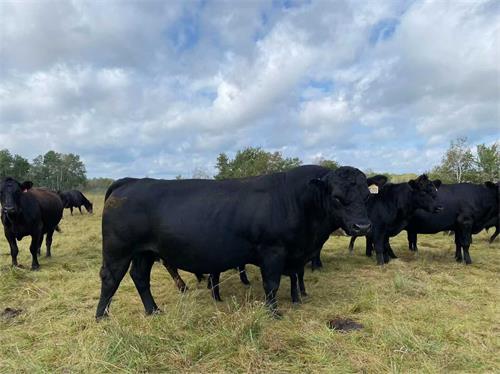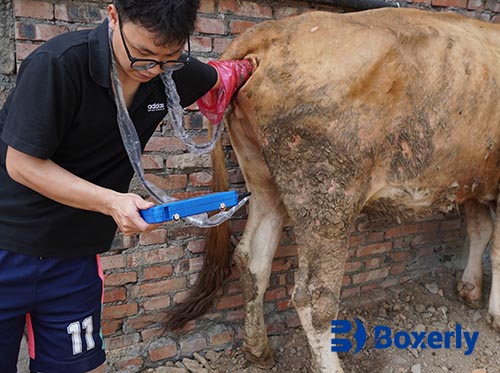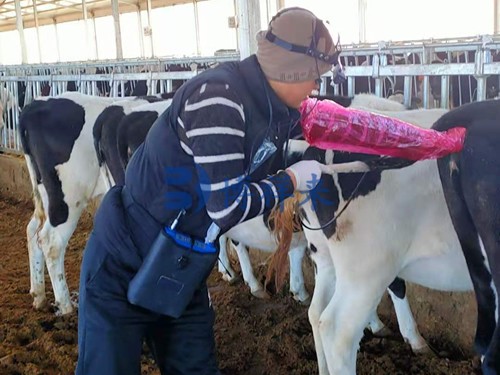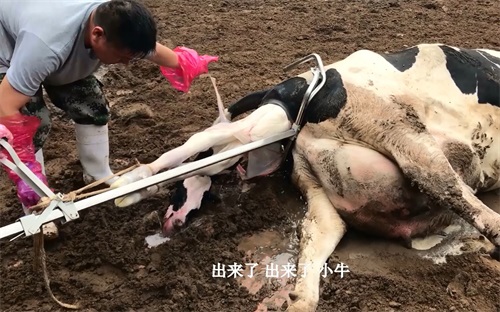Detecting pregnancy in cattle is a fundamental aspect of herd management, directly influencing reproductive efficiency and farm profitability. Early and accurate pregnancy diagnosis allows producers to make informed decisions regarding nutrition, culling, and breeding strategies. This article delves into the primary methods used to detect pregnancy in cattle, highlighting their procedures, advantages, limitations, and best practices.

1. Transrectal Palpation
Transrectal palpation is one of the most traditional and widely used methods for pregnancy detection in cattle. It involves a trained veterinarian or technician inserting a gloved arm into the cow's rectum to feel the reproductive tract.
Timing: Pregnancy can typically be detected between 35 to 45 days post-breeding.
Advantages:
Immediate results.
Cost-effective, requiring minimal equipment.
Allows assessment of the reproductive tract's health.
Limitations:
Requires skilled personnel to avoid injury to the cow or fetus.
Less informative regarding fetal viability or multiple pregnancies.
2. Transrectal Ultrasonography
Transrectal ultrasonography utilizes ultrasound technology to visualize the uterus and developing fetus. A probe is inserted into the rectum, emitting sound waves that create images of internal structures.
Timing: Pregnancy can be detected as early as 28 days post-breeding.
Advantages:
Provides visual confirmation of pregnancy.
Can assess fetal viability by detecting a heartbeat.
Identifies multiple pregnancies and estimates fetal age.
Determines fetal sex between 55 to 80 days of gestation.
Limitations:
Requires specialized equipment and training.
Higher initial investment compared to palpation.
3. Blood-Based Pregnancy Tests
Blood tests detect pregnancy-associated glycoproteins produced by the placenta. A blood sample is collected from the cow and analyzed in a laboratory.
Timing: Effective from 28 days post-breeding, provided the cow is at least 90 days postpartum to avoid false positives.
Advantages:
High accuracy in detecting pregnancy.
Useful in remote areas with limited access to veterinary services.
Limitations:
Results are not immediate; samples must be sent to a lab.
Does not provide information on fetal viability, age, or multiple pregnancies.
Additional costs for sample collection and shipping.
4. Progesterone Testing
Progesterone levels can be measured in milk or blood to infer pregnancy status. High progesterone levels 21 to 24 days post-breeding suggest pregnancy.
Advantages:
Non-invasive and can be performed on-farm.
Useful for early detection of non-pregnancy.
Limitations:
Less reliable for confirming pregnancy due to potential false positives.
Requires multiple tests for accuracy.
5. Observational Methods
Observing behavioral signs, such as the absence of estrus (heat), can indicate pregnancy. However, this method is less reliable and should be supplemented with other diagnostic techniques.

Best Practices for Pregnancy Detection
Timing: Schedule pregnancy checks based on the chosen method's optimal detection window.
Personnel Training: Ensure that individuals performing palpation or ultrasonography are adequately trained to minimize risks.
Record Keeping: Maintain detailed records of breeding dates, pregnancy checks, and outcomes to inform management decisions.
Animal Handling: Use proper restraint and handling techniques to reduce stress and prevent injury during examinations.
Conclusion
Selecting the appropriate method for pregnancy detection in cattle depends on various factors, including available resources, herd size, and management goals. Combining methods may offer the most comprehensive insights, enhancing reproductive efficiency and overall herd productivity.
References
Alabama Cooperative Extension System. (n.d.). Beef Cow Pregnancy Examination. Retrieved from https://www.aces.edu/blog/topics/beef/beef-cow-pregnancy-examination/
Beef Cattle Research Council. (n.d.). Pregnancy Detection. Retrieved from https://www.beefresearch.ca/topics/pregnancy-detection/
Agriculture Victoria. (n.d.). Pregnancy testing of beef cattle. Retrieved from https://agriculture.vic.gov.au/livestock-and-animals/beef/breeding/pregnancy-testing-of-beef-cattle
Merck Veterinary Manual. (n.d.). Pregnancy Determination in Cattle. Retrieved from https://www.merckvetmanual.com/management-and-nutrition/management-of-reproduction-cattle/pregnancy-determination-in-cattle
University of Nebraska–Lincoln. (n.d.). Pregnancy diagnosis in heifers and cows provides management options. Retrieved from https://preec.unl.edu/pregnancy-diagnosis-heifers-and-cows-provides-management-options









